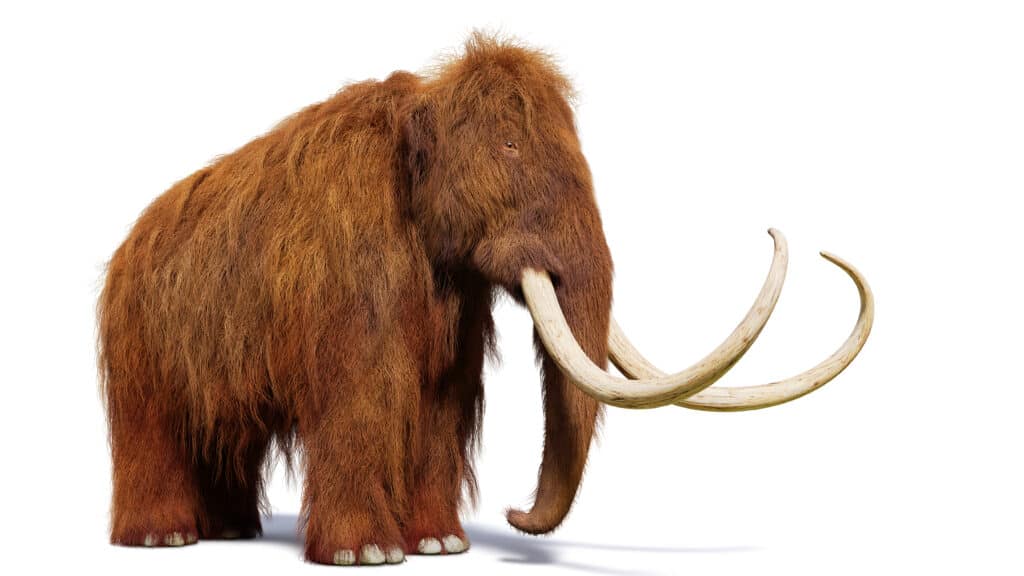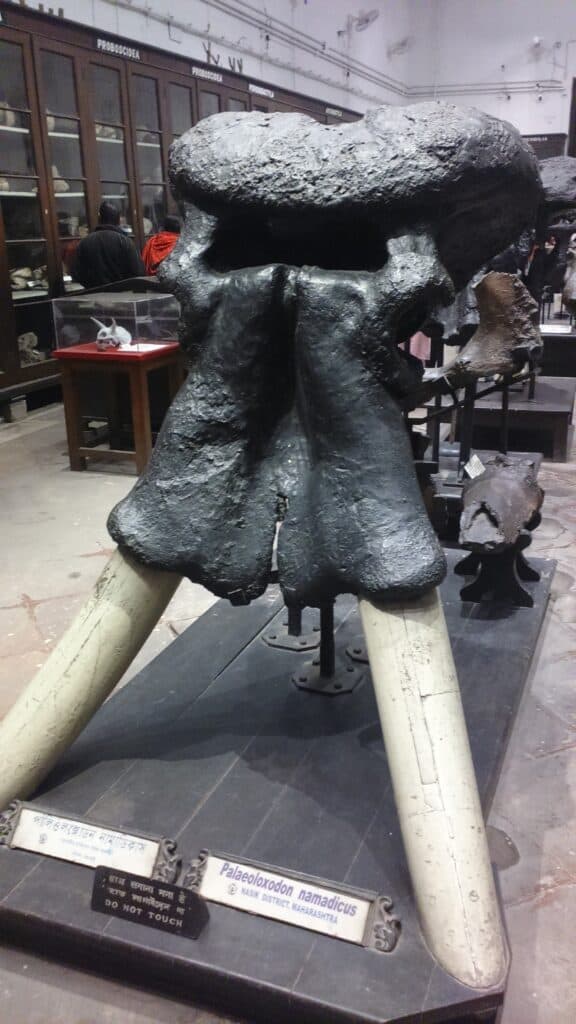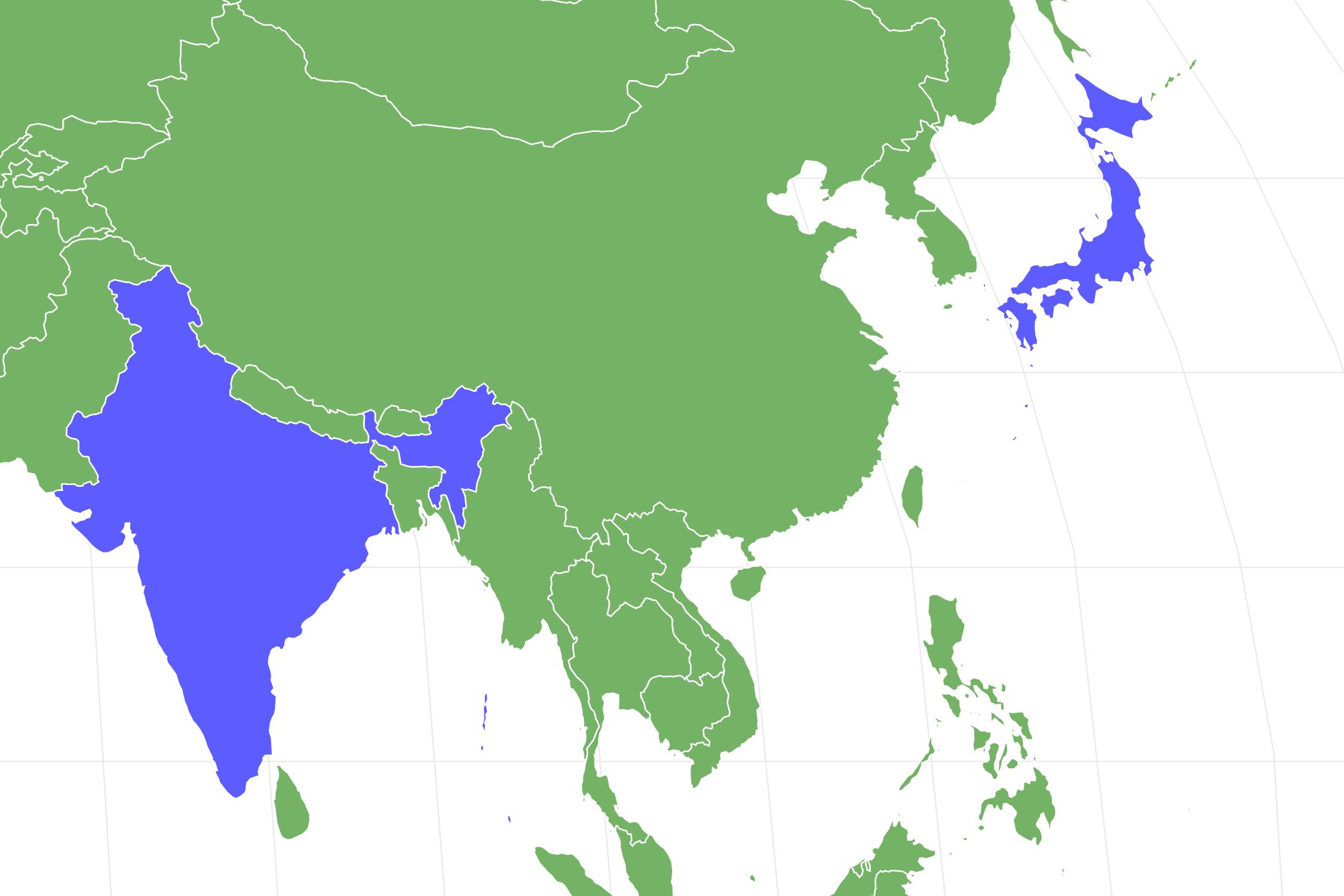Palaeloxodon namadicus was the largest land mammal ever found
Advertisement
Palaeoloxodon namadicus Scientific Classification
- Kingdom
- Animalia
- Phylum
- Chordata
- Class
- Mammalia
- Order
- Proboscidea
- Family
- Elephantidae
- Genus
- Palaeoloxodon
- Scientific Name
- Palaeoloxodon namadicus
Read our Complete Guide to Classification of Animals.
Palaeoloxodon namadicus Conservation Status
Palaeoloxodon namadicus Facts
- Group Behavior
- Herd
- Fun Fact
- Palaeloxodon namadicus was the largest land mammal ever found
- Biggest Threat
- Climate change
- Most Distinctive Feature
- Palaeloxodon namadicus had long, straight tusks
- Distinctive Feature
- Palaeloxodon namadicus had a prominent ridge on its skull
- Habitat
- Temperate, wooded habitat
- Diet
- Herbivore
- Lifestyle
- Herd
- Type
- Prehistoric elephant
- Common Name
- Asian straight-tusked elephant
- Number Of Species
- 1
- Location
- India and Japan
View all of the Palaeoloxodon namadicus images!
Palaeoloxodon namadicus, also called the Asian straight-tusked elephant, is a species of prehistoric elephant that lived from the Middle to Late Pleistocene. It originated in Africa in the Pliocene Epoch before expanding into Asia. Palaeoloxodon namadicus is one of the largest elephant species, with some being over 13 feet tall at the shoulder. The species is also considered the largest land mammal ever found based on its fragmental remains.
Description and Size
Palaeoloxodon namadicus is an extinct species of prehistoric elephants that ranged throughout Asia during the Pleistocene. Although it is a separate species, many scientists believe it might be a subspecies of Europe’s straight-tusked elephant—Palaeoloxodon antiquus. P. namadicus is, however, distinguishable from its close relative P. antiquus by its stouter cranium and less robust limb bones.
It has been difficult to determine the exact size of this elephant. However, by studying the bone fragments, scientists think it might be the largest land mammal to have ever lived. Estimates of this elephant’s height have yielded between 13 and 17 feet on average. They weighed about 44,000 pounds on average, outweighing the Paraceratherium and the largest mammoth species.
In addition to being bigger, P. namadicus had a unique and unusually large skull compared to other elephants. They had a distinctive parieto-occipital crest (like a headband) over their cranium. Another distinct feature of this elephant is the relatively low curvature of its tusks. The elephant was named after its long and relatively straight tusk.

Many scientists believe
Palaeoloxodon namadicusmight be a subspecies of Europe’s straight-tusked elephant
Palaeoloxodon antiquus.
©Jl FilpoC, CC BY-SA 4.0 <https://creativecommons.org/licenses/by-sa/4.0>, via Wikimedia Commons – License
Evolution and History
The first appearance of Palaeoloxodon namadicus in the fossil record was in Africa during the Early Pliocene about four million years ago. Eventually, some species migrated to Europe, Asia, and other parts of the earth.
The Asian straight-tusked elephant lived in Asia. The range of this species extended from India to Japan. The evolutionary relationships between the different members of the Palaeoloxodon genus have remained a bit of a mystery for years.
The only remarkable adaptation that differentiated the different species identified so far in the Palaeoloxodon genus is the presence of an unusual bony crest on their head. This crest probably supported the muscles on their enormous heads. The size and robustness of this crest have varied considerably between the different species identified so far.
Diet — What Did Paleoloxodon namadicus Eat?
Studies of the Paleoloxodon namadicus’ diet show that this animal was a herbivore. P. namadicus primarily had a grazing diet but may have browsed on leaves from trees a few times. This quality differentiated them from extinct mammoth species that existed around the same time.
These animals probably lived in herds of five to 15 individuals. Like modern elephants, they depended heavily on freshwater, which would have heavily influenced their migrations. Studies of their dental microwear suggest that their diet may have varied based on the presiding condition. It ranged from near-total browsing to almost complete grazing. This might also suggest that they had a seasonal diet variation.
Habitat — When and Where Palaeoloxodon namadicus Lived
Paleoloxodon namadicus lived in Asia from the Early to Middle Pleistocene. The animal had a widespread distribution. Their range extended from the Indian subcontinent all the way to Japan. In places where they’re found, this Paleoloxodon species lived in temperate wooded habitats.
Threats and Predators
The species of Palaeoloxondon didn’t become extinct until about 20,000 years ago. This means that their existence overlapped significantly with humans. Although whole or partial skeletons are rare, and isolated tusks are found more often, there is evidence proving that P. namadicus were hunted by early humans during the Late Pleistocene. Some sites have also been documented where this species’ remains appeared with remains of early humans, however it is uncertain if modern humans also preyed on them before extinction like their ancestors.
The mammoth species (genus Mammuthus) that also existed in Asia around the same time also posed a threat to this prehistoric elephant species. Scientists believe that Paleoloxodon were predominantly grazers before they migrated from Africa. They may have picked up the browsing habit to distinguish themselves from the mammoths and, more importantly, to avoid competition.

The mammoth species (genus
Mammuthus) that also existed in Asia around the same time is believed to have been a predator of
Paleoloxodon.
©Dotted Yeti/Shutterstock.com
Discoveries and Fossils — Where Palaeoloxodon namadicus Was Found
Some fossil remains attributed to P. namadicus have been found across China and Southeast Asia. However, the status of some of these remains is still unresolved, with some other authors attributing it to P. naumanni. Most of the postcranial remains of Palaeoloxodon found in this region are substantially larger than the ones in India.
Palaeoloxodon remains also found in the Indonesian Island of Sulawesi have also been attributed to P. namadicus, with a size similar to the ones from the Indian subcontinent. Paleontologists have also found remains (about 56,000 years old) in the Dhasan River Area along the Ganga Plain in Uttar Pradesh.

Palaeoloxodon namadicus fossilized remains discovered in India.
©Royroydeb, CC BY-SA 4.0 <https://creativecommons.org/licenses/by-sa/4.0>, via Wikimedia Commons – License
Extinction — When Did Palaeoloxodon namadicus Die Out?
Many of the Palaeoloxodon species went into extinction at the end of the last glaciation period. The youngest remains of species within this genus date back to around 24,000 years ago. This is similar to the last known record of P. namadicus.
P. namadicus is generally thought to have gone extinct during the Late Pleistocene. This makes them one of several megafaunal species native to India known to have become extinct during the same period. The other three are Equus namadicus, proboscidean Stegon namadicus, and a hippopotamus species of the genus Hexaprotodon.
The demise of Palaeoloxodon namadicus is likely related to some of the dramatic environmental changes that happened during the Pleistocene. Large northern ice sheets continuously expanded and contracted. This caused the dry steppes to expand to create an environment that favored the mammoths more, while the open woodlands contracted to create a less-favorable environment for the Palaeloxodon.
Similar Animals to the Palaeoloxodon namadicus
Similar animals to the Palaeoloxodon namadicus include:
- Palaeloxodon antiquus — This is another species of straight-tusked elephant that is quite similar to P. namadicus. In fact, some experts regard P. namadicus as a subspecies of P. antiquus because of how similar their tusks are. However, P. antiquus had a more pronounced crest, and its skull roof wasn’t as thick as that of P. namadicus.
- Palaeoloxodon recki — This prehistoric elephant species was native to Africa. It was also one of the planet’s largest elephant species, measuring up to 14 feet in shoulder height and weighing 24,000 pounds. P. namadicus‘ reconstruction came from what was known of P. recki and P. antiquus.
- Deinotherium – This was a large proboscidean that looked like an elephant and lived throughout the Middle Miocene to the Early Pleistocene. Although they looked like modern elephants superficially, their necks were more flexible, and their limbs were adapted for a cursorial lifestyle. Their tusks also curved back and downwards.
- Mammoth — This refers to any species belonging to the extinct Mammuthus genus. The various mammoth species had long, curved tusks. Additionally, the northern species had a long hair covering. They existed from the Pliocene Epoch to the Holocene across Africa, Asia, Europe, and North America.
Related Animals
View all 192 animals that start with PPalaeoloxodon namadicus FAQs (Frequently Asked Questions)
When was Palaeloxodon namadicus alive?
Palaeloxodon namadicus lived from the Early Pleistocene (about four million years ago) to the Late Pleistocene, about 20,000 years ago.
How big was Palaeloxodon namadicus?
The full skeleton of P. namadicus has not been recovered. This has made it difficult to estimate the exact size of this elephant. However, based on studies of the fragmentary fossils and inspiration from its close relatives, the beast was said to be about 13 to 15 feet tall. Experts believe it is the largest land mammal to have ever lived, rivaling even the sauropods.
Was Palaeloxodon namadicus bigger than the Paraceratherium?
There’s relatively recent speculation that the largest Palaeoloxodon species would have been slightly taller (about one foot) and reasonably heavier than the biggest Paraceratherium (hornless rhinoceros) species.
Thank you for reading! Have some feedback for us? Contact the AZ Animals editorial team.
Sources
- Wikipedia, Available here: https://en.wikipedia.org/wiki/Palaeoloxodon_namadicus
- Wikipedia, Available here: https://en.wikipedia.org/wiki/Palaeoloxodon
- EurekAlert!, Available here: https://www.eurekalert.org/news-releases/920433
- Natural History Museum, Available here: https://www.nhm.ac.uk/discover/news/2020/february/weird-skulls-of-straight-tusked-elephants-reveal-how-many-species.html

















